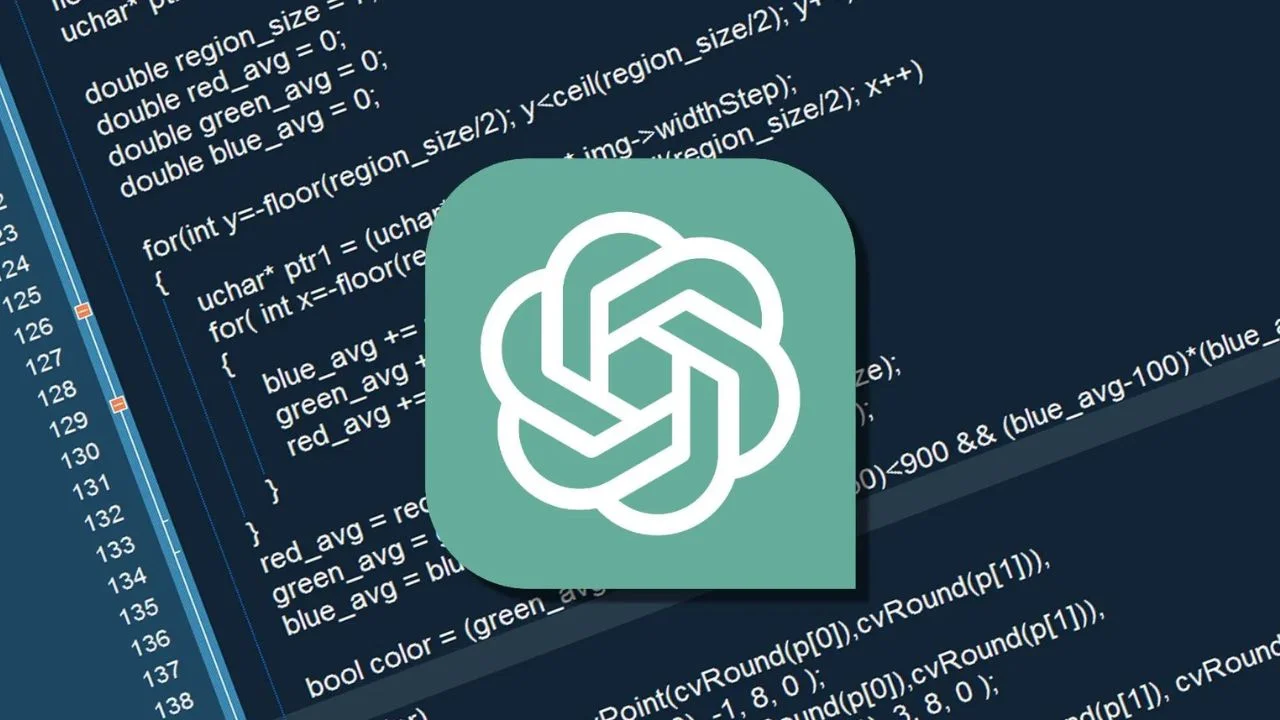Uncover how ChatGPT can streamline your coding tasks while addressing common questions about its role in programming. Find out what it can do for you and how to use it effectively!

As artificial intelligence continues to transform various industries, one question emerges: Can ChatGPT code as well as a programmer? While ChatGPT has proven itself to be a useful tool for numerous coding tasks, it isn’t a full replacement for human developers—at least not yet.
Whether you’re a novice or an experienced coder, understanding how ChatGPT fits into your development workflow can significantly enhance productivity.
In this article, we’ll cover everything you need to know about using ChatGPT for coding tasks, from its strengths to its limitations, and how you can integrate it into your daily programming routine.
ChatGPT shines when it’s used for tasks that don’t require deep, nuanced expertise but still benefit from automation.
It excels at several coding-related tasks:
Writing Simple Scripts: ChatGPT can help you create scripts to automate repetitive tasks, such as file management or data extraction. This capability can save you a significant amount of time in your workflow. For example, if you need a script that renames multiple files in a directory, ChatGPT can provide you with a simple Python script like this:
import os
def rename_files(directory):
for count, filename in enumerate(os.listdir(directory)):
new_name = f"file_{count}.txt"
os.rename(os.path.join(directory, filename), os.path.join(directory, new_name))
rename_files('/path/to/your/directory')
Fixing Syntax Errors: AI is particularly good at spotting small mistakes that might trip you up, saving you time in debugging. It can highlight errors and suggest quick fixes, enhancing your coding efficiency.
Generating Template Code: It can quickly generate boilerplate code, reducing time spent on routine tasks. Whether you need a new function or a class structure, ChatGPT can help you get started. For instance, you could request a template for a basic REST API in Flask:
from flask import Flask, jsonify
app = Flask(__name__)
@app.route('/api', methods=['GET'])
def api():
return jsonify({'message': 'Hello, World!'})
if __name__ == '__main__':
app.run(debug=True)
Providing Suggestions for Code Optimizations: While ChatGPT may not always find the most elegant solution, it often suggests optimizations that improve performance or readability. This can be particularly useful when working on larger projects. For example, if you have a function that processes a list, you might ask ChatGPT how to optimize it:
def process_list(my_list):
result = []
for item in my_list:
result.append(item * 2)
return result
# Optimized using list comprehension
def optimized_process_list(my_list):
return [item * 2 for item in my_list]
However, it’s important to remember that ChatGPT is not capable of building large-scale applications or providing deeply strategic architectural advice. For complex projects, human judgment and experience remain irreplaceable.
To maximize the benefits of using ChatGPT for coding, you’ll want to know how to interact effectively with the AI.
The key to getting useful code from ChatGPT lies in how you phrase your requests.
You’ll want to be as specific as possible.
For instance, instead of asking, “Can you write me a Python program?” you should narrow it down: “Can you write a Python script that fetches weather data from an API and saves it in a CSV file?”
This approach helps ChatGPT understand your needs better and reduces the amount of follow-up corrections you need to make.
Engaging in a back-and-forth conversation can also refine your queries. Start with a broad question and then ask follow-up questions based on the AI’s responses. This iterative process can help you arrive at the best solution for your coding needs.
ChatGPT can also serve as a virtual research assistant.
If you’re unfamiliar with a particular coding library or resource, you can ask ChatGPT for recommendations.
For example, you might query, “What are some popular Python libraries for web scraping?” The AI can provide suggestions and even give a brief description of each, helping you choose the right tool for your task.
Some libraries that ChatGPT might suggest include:
This aspect of ChatGPT is particularly valuable for developers who are constantly exploring new technologies. Engaging ChatGPT in an ongoing discussion about the pros and cons of different tools can lead to more informed decisions and deeper understanding.
In this way, ChatGPT can help you navigate the vast landscape of coding libraries, ensuring that you have the right tools at your disposal.
const https = require('https');
https.get('https://api.example.com/data', (resp) => {
let data = '';
// A chunk of data has been received.
resp.on('data', (chunk) => {
data += chunk;
});
// The whole response has been received.
resp.on('end', () => {
console.log(JSON.parse(data));
});
}).on("error", (err) => {
console.log("Error: " + err.message);
});
However, it’s important to note that this code might need tweaking, especially for complex projects. Always take the time to test and modify the examples to fit your specific requirements.
By utilizing ChatGPT to generate example code, you can accelerate your learning curve and gain practical experience quickly.
ChatGPT is not just a theoretical tool; it has practical applications that can be integrated into real-world coding scenarios. Here are some examples of how you can effectively use ChatGPT in your programming workflow:
When you encounter a bug, you can describe the issue to ChatGPT, and it can suggest potential solutions. For example, if you’re having trouble with a Null Pointer Exception in Java, you might say:
“I’m getting a Null Pointer Exception in my Java code. Here’s the relevant part: …”
ChatGPT can help identify the issue and suggest ways to fix it.
If you’re exploring a new framework, you can ask ChatGPT for tutorials or documentation links. For instance:
“Can you provide an overview of React.js and a basic example?”
ChatGPT can guide you through the fundamentals and provide sample code to kickstart your learning.
Here’s a simple React component example:
import React from 'react';
function Greeting(props) {
return <h1>Hello, {props.name}!</h1>;
}
export default Greeting;
Writing tests can often feel tedious, but ChatGPT can assist by generating unit tests based on your existing code. If you have a function and want to ensure its correctness, you might ask:
“Can you write unit tests for this Python function?”
ChatGPT can provide a response like this:
import unittest
def add(a, b):
return a + b
class TestAddFunction(unittest.TestCase):
def test_add_positive_numbers(self):
self.assertEqual(add(2, 3), 5)
def test_add_negative_numbers(self):
self.assertEqual(add(-1, -1), -2)
if __name__ == '__main__':
unittest.main()
This can significantly speed up your testing process and ensure your code is robust.
Not quite.
While ChatGPT can assist with coding tasks, human oversight is crucial for anything beyond simple scripts.
ChatGPT can handle routine or repetitive coding tasks, but creativity, strategic planning, and problem-solving are areas where programmers still have the upper hand.
Moreover, software development often involves complex considerations that require human intuition and experience.
To get the best results, ask clear, specific questions.
If you’re unsure about the initial response, you can refine your query or request clarifications.
The more details you provide, the more accurate the AI’s responses will be.
This iterative approach enhances the quality of the conversation and increases your chances of receiving valuable insights.
No.
While ChatGPT can generate functional code, it’s not guaranteed to be free from errors.
Always review and test any code before deploying it.
A critical eye is necessary, especially for production environments, where even small bugs can lead to significant issues.
The more detail you provide, the better.
Instead of saying, “Write a script,” specify your desired outcome, the programming language, and any relevant constraints.
This helps ChatGPT narrow down the scope of your request and deliver more targeted responses.
A well-defined query can lead to higher quality outputs and save time in the long run.
The ownership of AI-generated content, including code, is a gray area.
Generally, since you prompted the AI, the output is considered your creation.
However, it’s always wise to check the terms of service of the AI platform you’re using to ensure compliance.
ChatGPT is well-versed in many programming languages, including but not limited to:
It can even handle more specialized languages like R for data analysis.
Yes, ChatGPT can help you generate code for data analysis and visualization, especially if you’re working with popular libraries like Pandas, NumPy, or Matplotlib.
For example, if you want to create a simple line chart using Matplotlib, you can request:
“Can you show me how to create a line chart using Matplotlib in Python?”
Here’s a sample response:
import matplotlib.pyplot as plt
# Sample data
x = [1, 2, 3, 4, 5]
y = [2, 3, 5, 7, 11]
plt.plot(x, y, marker='o')
plt.title('Sample Line Chart')
plt.xlabel('X-axis')
plt.ylabel('Y-axis')
plt.grid()
plt.show()
This code snippet can help you visualize data effectively, enhancing your analytical capabilities.
ChatGPT is trained on vast amounts of data, meaning it can handle multiple dialects or implementations of a programming language.
For instance, Python 2.x and 3.x are different, and ChatGPT can adapt based on your prompt.
Therefore, make sure you specify which version you’re using to get the most relevant advice.
ChatGPT can be a powerful assistant in your coding workflow, whether you’re automating simple tasks, exploring new libraries, or generating example code.
While it’s not a replacement for skilled programmers, it provides valuable support for specific tasks, saving time and improving efficiency.
Always remember, though, to verify the AI-generated code and refine your interactions for the best results.
By incorporating ChatGPT into your programming routine, you’re not just using a tool—you’re amplifying your productivity.
Embrace this AI-driven approach, and watch how it enhances your coding experience.
Subscribe and get 3 of our most templates and see the difference they make in your productivity.
Includes: Task Manager, Goal Tracker & AI Prompt Starter Pack
We respect your privacy. No spam, unsubscribe anytime.

AI tool that improves writing with smart paraphrasing, grammar checks & image generation.

AI platform for managing healthcare workflows, notes, and patient collaboration.

AI tool organizes your inbox by automatically sorting emails and reducing clutter.